Definition
The scientific method is a series of processes that people can use to gather knowledge about the world around them, improve that knowledge, and attempt to explain why and/or how things occur. This method involves making observations, forming questions, making hypotheses, doing an experiment, analyzing the data, and forming a conclusion. Every scientific experiment performed is an example of the scientific method in action, but it is also used by non-scientists in everyday situations.
Scientific Method Overview
The scientific method is a process of trying to get as close as possible to the objective truth. However, part of the process is to constantly refine your conclusions, ask new questions, and continue the search for the rules of the universe. Through the scientific method, scientists are trying to uncover how the world works and discover the laws that make it function in that way. You can use the scientific method to find answers for almost any question, though the scientific method can yield conflicting evidence based on the method of experimentation. In other words, the scientific method is a very useful way to figure things out – though it must be used with caution and care!
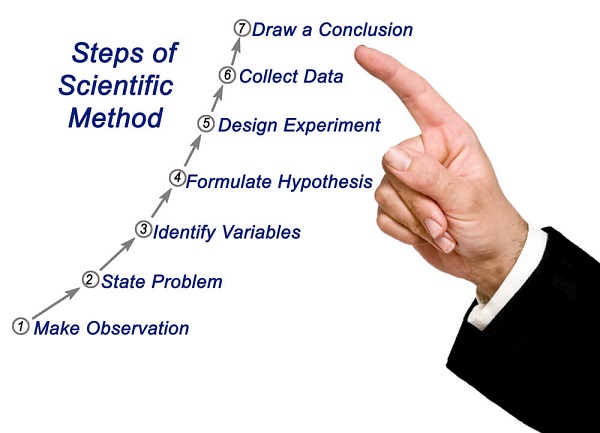
Scientific Method Steps
The exact steps of the scientific method vary from source to source, but the general procedure is the same: acquiring knowledge through observation and testing.
Making an Observation
The first step of the scientific method is to make an observation about the world around you. Before hypotheses can be made or experiments can be done, one must first notice and think about some sort of phenomena occurring. The scientific method is used when one does not know why or how something is occurring and wants to uncover the answer. But, before you can form a question you must notice something puzzling in the first place.
Asking a Question
Next, one must ask a question based on their observations. Here are some examples of good questions:
- Why is this thing occurring?
- How is this thing occurring?
- Why or how does it happen this way?
Sometimes this step is listed first in the scientific method, with making an observation (and researching the phenomena in question) listed as second. In reality, both making observations and asking questions tend to happen around the same time.
One can see a confusing occurrence and immediately think, “why is it occurring?” When observations are being made and questions are being formed, it is important to do research to see if others have already answered the question or uncovered information that may help you shape your question. For example, if you find an answer to why something is occurring, you may want to go a step further and figure out how it occurs.
Forming a Hypothesis
A hypothesis is an educated guess to explain the phenomena occurring based on prior observations. It answers the question posed in the previous step. Hypotheses can be specific or more general depending on the question being asked, but all hypotheses must be testable by gathering evidence that can be measured. If a hypothesis is not testable, then it is impossible to perform an experiment to determine whether the hypothesis is supported by evidence.
Performing an Experiment
After forming a hypothesis, an experiment must be set up and performed to test the hypothesis. An experiment must have an independent variable (something that is manipulated by the person doing the experiment), and a dependent variable (the thing being measured which may be affected by the independent variable). All other variables must be controlled so that they do not affect the outcome. During an experiment, data is collected. Data is a set of values; it may be quantitative (e.g. measured in numbers) or qualitative (a description or generalization of the results).
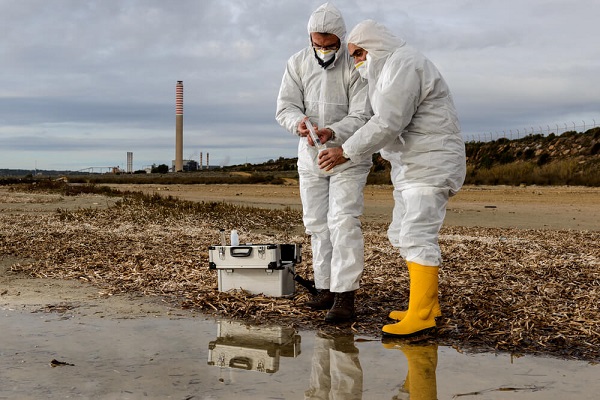
For example, if you were to test the effect of sunlight on plant growth, the amount of light would be the independent variable (the thing you manipulate) and the height of the plants would be the dependent variable (the thing affected by the independent variable). Other factors such as air temperature, amount of water in the soil, and species of plant would have to be kept the same between all of the plants used in the experiment so that you could truly collect data on whether sunlight affects plant growth. The data that you would collect would be quantitative – since you would measure the height of the plant in numbers.
Analyzing Data
After performing an experiment and collecting data, one must analyze the data. Research experiments are usually analyzed with statistical software in order to determine relationships among the data. In the case of a simpler experiment, one could simply look at the data and see how they correlate with the change in the independent variable.
Forming a Conclusion
The last step of the scientific method is to form a conclusion. If the data support the hypothesis, then the hypothesis may be the explanation for the phenomena. However, multiple trials must be done to confirm the results, and it is also important to make sure that the sample size—the number of observations made—is big enough so that the data is not skewed by just a few observations.
If the data do not support the hypothesis, then more observations must be made, a new hypothesis is formed, and the scientific method is used all over again. When a conclusion is drawn, the research can be presented to others to inform them of the findings and receive input about the validity of the conclusion drawn from the research.
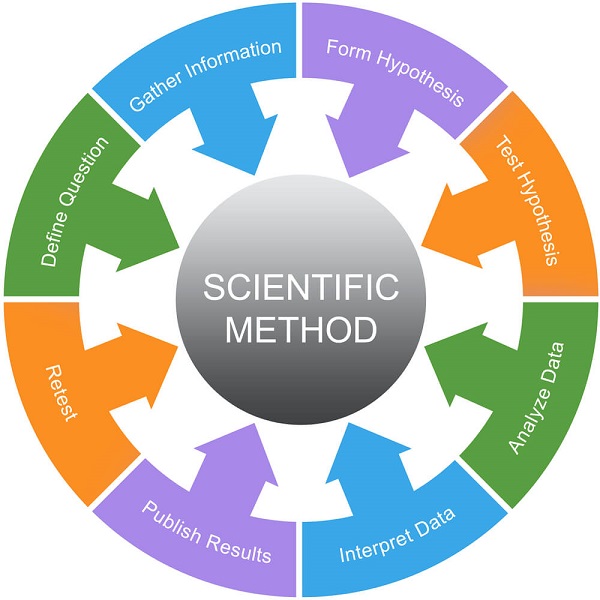
Scientific Method Examples
There are very many examples of the use of the scientific method throughout history because it is the basis for all scientific experiments. Scientists have been conducting experiments using the scientific method for hundreds of years.
One such example is Francesco Redi’s experiment on spontaneous generation. In the 17th Century, when Redi lived, people commonly believed that living things could spontaneously arise from organic material. For example, people believed that maggots were created from meat that was left out to sit. Redi had an alternate hypothesis: that maggots were actually part of the fly life cycle!
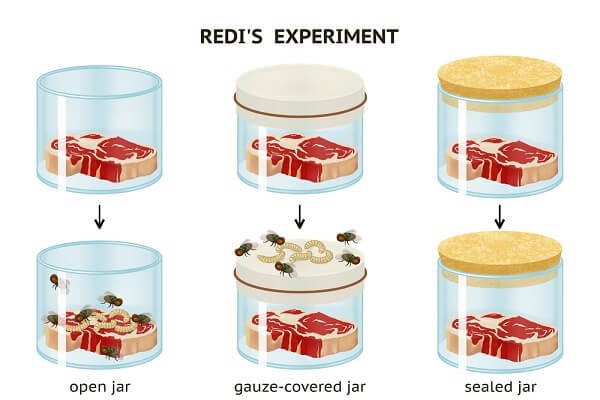
He conducted an experiment by leaving four jars of meat out: some uncovered, some covered with muslin, and some sealed completely. Flies got into the uncovered jars and maggots appeared a short time later. The jars that were covered had maggots on the outer surface of the muslin, but not inside the jars. Sealed jars had absolutely no maggots whatsoever.
Redi was able to conclude that maggots did not spontaneously arise in meat. He further confirmed the results by collecting captured maggots and growing them into adult flies. This may seem like common sense today, but back then, people did not know as much about the world, and it is through experiments like these that people uncovered what is now common knowledge.
Scientists use the scientific method in their research, but it is also used by people who aren’t scientists in everyday life. Even if you were not consciously aware of it, you have used the scientific method many times when solving problems around you.
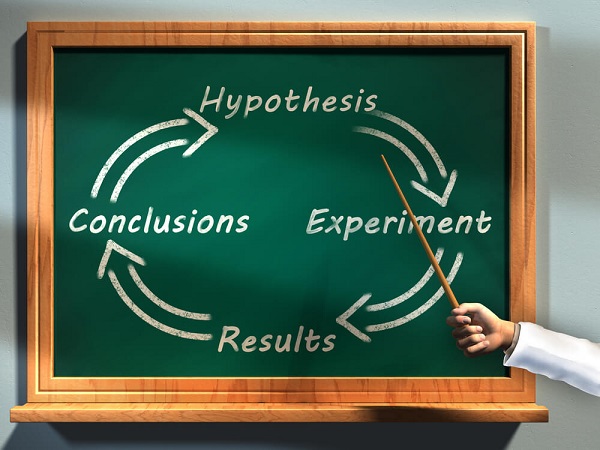
For example, say you are at home and a lightbulb goes out. Noticing that the lightbulb is out is an observation. You would then naturally question, “Why is the lightbulb out?” and come up with possible guesses, or hypotheses. For example, you may hypothesize that the bulb has burned out. Then you would perform a very small experiment in order to test your hypothesis; namely, you would replace the bulb and analyze the data (“Did the light come back on?”).
If the light turned back on, you would conclude that the lightbulb had, in fact, burned out. But if the light still did not work, you would come up with other hypotheses (“The socket doesn’t work”, “Part of the lamp is broken,” “The fuse went out”, etc.) and test those.
Quiz
